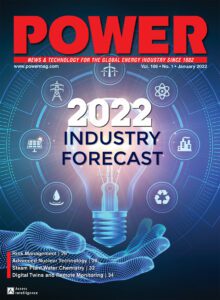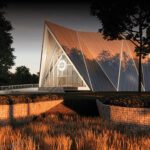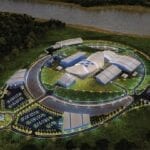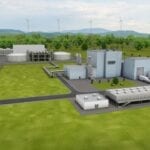Improvements in nuclear power technology are being driven by research into safer reactor designs and new fuel types, including smaller reactors that offer flexible siting options with modular construction. Nuclear power also is finding support in the fight against climate change.
Public and private investment into research and development of advanced technologies for nuclear power generation is on the rise. There’s support for large reactors, with China and Russia leading the way in building multiple advanced units, along with smaller projects offering faster construction—and lower build costs—that are more flexible and scalable.
Most large reactors operating today are Generation II designs, but more Generation III (and III+) reactors are coming online, and Generation IV reactors are being tested. Ventures led by U.S. billionaires Bill Gates and Warren Buffett have entered the picture in support of smaller reactors, with the Gates-backed TerraPower teaming with PacifiCorp, Buffett’s Berkshire Hathaway power company, and GE Hitachi Nuclear Energy on next-generation small reactor technology that would use new reactor fuels.
“Certainly, fusion energy and SMRs [small modular reactors] are at the top of that list” when it comes to the most promising nuclear power technologies, said Chuck Goodnight, a partner at Arthur D. Little, where he leads the U.S. Nuclear Energy team as part of the firm’s global Energy & Utilities Practice. Goodnight told POWER that “several Generation IV nuclear designs are also on the horizon. Examples include X-energy’s Xe-100 pebble bed design and TerraPower’s traveling wave reactor.”
Goodnight said those designs “are both unique in that the fuel is actually moved within the reactor during operation to optimize fuel use. Another Gen IV technology showing promise is molten salt designs. I am excited to see these new technologies develop to realize the positive impacts they can have. I have always liked having options, and with these and other examples in development, it looks like we will soon have a good selection of nuclear energy choices to fit a range of requirements.”
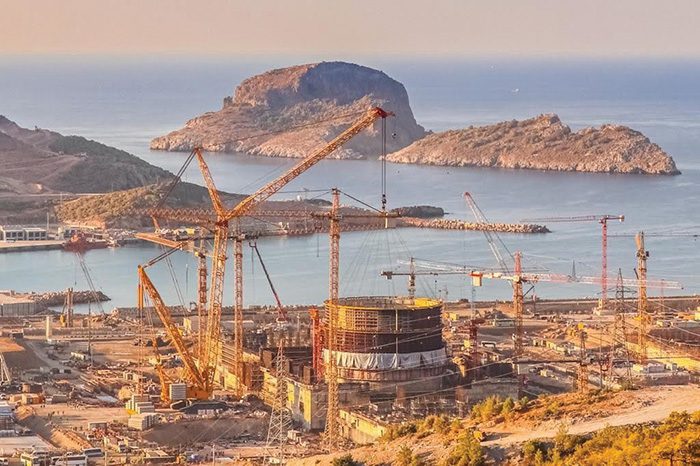 |
|
1. Construction continues at the site of the Akkuyu Nuclear Power Plant, the first nuclear power plant in Turkey. A license for construction of Unit 4 was issued in October 2021. Turkish officials have said it’s the largest nuclear power construction site in the world, with about 12,000 workers at the site each day, along with more than 1,000 pieces of construction equipment and vehicles, including 70 construction cranes. Courtesy: Akkuyu Nuclear JSC |
Some of the newer large reactors are designed with more than 1,600 MW of generation capacity; an example is Unit 3 at the Olkiluoto Nuclear Power Plant (NPP) in Finland, which began producing electricity in December. That unit, though, highlights one of the problems with today’s large reactors—long construction timelines in many cases (construction of Unit 3 began in 2005), exorbitant cost overruns, and intensifying debate over nuclear power’s role as the world increasingly turns toward renewable energy and away from thermal generation.
SMRs in the Spotlight
Much of the nuclear sector’s promise revolves around SMRs, which provide flexibility and scalability, and can be deployed more quickly and cost-effectively than large-scale units. Small reactors are generally considered those with 300 MW or less of generation capacity, and then there are “very small reactors,” usually with 15 MW or less of capacity and available for deployment in remote communities, often as part of distributed generation installations. Several governments have thrown their support behind SMRs, including the U.S. and Canada.
An even smaller reactor, a 4-MW unit (with about 1.5 MW of power generation) known as Oklo, is being reviewed by the U.S. Nuclear Regulatory Commission (NRC). Oklo is a Silicon Valley-based startup with a plan to build microreactors that could supply power for business complexes, college campuses, and industrial sites. Oklo last year announced a cost-share arrangement with the U.S. Department of Energy (DOE), partnering with the DOE and Argonne National Laboratory to advance electrorefining technologies to produce fuel for advanced reactors. The technology would help reduce fuel costs for advanced reactor designs, and reduce waste by turning used fuel into advanced reactor fuel.
Part of what could drive continued research and development of nuclear power—and governmental support—is the technology’s role in the fight against climate change. Nuclear power, as a zero-emissions generation source, is seen by many as critical to the future of clean power generation.
“Nuclear power is critical in the fight against climate change. I would even say it more broadly—that nuclear power is critical to a sustainable future,” said Goodnight. “While there are no perfectly clean energy sources [because of the front-end development processes, resource extraction activities, and facility construction], nuclear power releases no greenhouse gases. As well, nuclear power is designed to be operated as baseload, meaning that it can run 24/7 when renewables such as wind and solar have intermittencies that must be dealt with.”
Goodnight continued: “Nuclear power plants have also consistently demonstrated operational capabilities in extreme conditions, including ice storms and hurricanes. Whether someone believes that climate change is anthropomorphic or not, we have a responsibility to be good stewards of the planet. To me, that means that we must do all we can to minimize any environmental impact resulting from human activity. Given that electricity production by means of nuclear power has minimal direct environmental impact, it should rank at the top of any energy production strategy.”
‘On Time and On Budget’
Those supporting research and development of advanced nuclear technologies agree that cost, safety, and an ability to be deployed quickly are important considerations as the sector moves forward.
“There are many great existing and new technologies under development that can service the nuclear new-build around the world,” said George Borovas, head of the nuclear practice at Hunton Andrews Kurth and managing partner of the firm’s office in Tokyo, Japan. “The critical issue that may make a specific reactor technology a game-changer is the ability of a company to deploy it on time and on budget.”
Borovas said the “on time and on budget” argument is helping those working on small reactor designs, and said larger reactors are benefiting from upgrades as well.
“SMRs certainly provide several advantages in terms of faster deployment, lower cost per unit as well as flexibility in terms of applications,” Borovas told POWER. “However, existing large reactors also have comparative advantages including construction and operating experience as well as economies of scale. Depending on the needs of a particular country or region, either option may be more suitable. That is one of the exciting developments in new nuclear in the 2020s and moving forward: many options that can support a particular country’s requirements and needs.”
U.S. Energy Secretary Jennifer Granholm at the recent COP26 climate conference in Scotland said the Biden administration is optimistic about the prospects for new nuclear reactors. “We are very bullish on these advanced nuclear reactors,” she told Yahoo News. “We have, in fact, invested a lot of money in the research and development of those. We are very supportive of that.”
Granholm said a clean energy future for the U.S. needs to include nuclear power. “Half of the United States’ clean power now—when I say ‘clean’ I’m talking about net-zero carbon emissions—is through the nuclear fleet,” she said. “If you look at the overall power, it’s about 20%. Globally, 29% of the clean power is nuclear.”
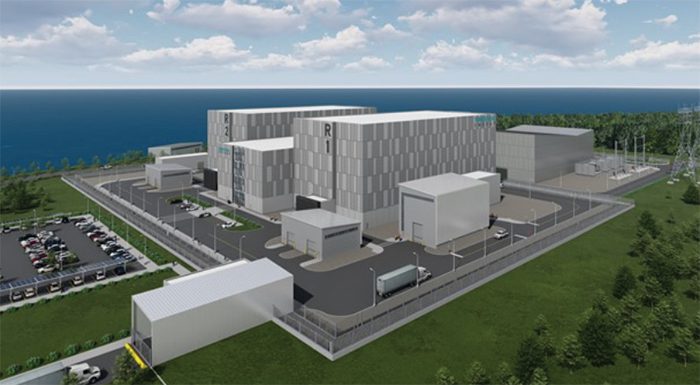 |
|
2. The integral molten salt reactor, or IMSR 400, being developed by Terrestrial Energy is shown in this rendering of the configuration proposed for the Darlington site in Canada. Courtesy: Terrestrial Energy |
Granholm also said risks associated with nuclear power are being addressed with new designs. “These advanced nuclear reactors, and the existing fleet, are safe,” she said. “We have the gold standard of regulation in the United States. And they’re baseload power. The holy grail is to identify clean, baseload power…. nuclear is dispatchable, clean baseload power, so we want to be able to bring more on.”
Said Borovas: “Safety and safety improvement have always been cornerstones of the nuclear industry. While nuclear is a demonstrably safe form of energy with one of the lowest death rates when compared to the mortality rates from other energy sources, the accident at Fukushima Daichi [in Japan in March 2011] did provide some important lessons that the global nuclear industry has now fully incorporated into its designs and operations.”
New Construction
France has been a model for advancing nuclear power; the country receives more than 70% of its electricity from nuclear plants, with more than 50 reactors in operation. President Emmanuel Macron in a televised address in November said he supports construction of new reactors, which he said are essential to keep power prices “reasonable.” Said Macron: “We are going, for the first time in decades, to relaunch the construction of nuclear reactors in our country and continue to develop renewable energies.” Macron said new construction would “guarantee France’s energy independence, to guarantee our country’s electricity supply and achieve our objectives, in particular carbon neutrality in 2050.”
French grid operator RTE in a recent report said next-generation nuclear reactors would offer an affordable path to move the country away from fossil fuels, noting, “Building new nuclear reactors is economically viable, especially as it makes it possible to maintain a fleet of around 40 GW in 2050.” The RTE report looked at ways France could satisfy the country’s likely increase in demand for electricity, and could offer a blueprint for other countries looking for decarbonization strategies that could include thermal power generation.
The World Nuclear Association (WNA) last fall said about 30 countries are considering, planning, or starting new nuclear power programs, and another 20 or so “have at some point expressed an interest.” Those include several in Europe, the Middle East, and across Africa, as well as countries in Central and South America, and much of Asia.
Among those countries is the United Arab Emirates (UAE), where the Barakah facility features four Korean-designed advanced pressurized water, or APR-1400, Generation III reactors. Unit 1 entered commercial operation last year; Unit 2 was connected to the grid in late 2021. Construction of Unit 3 was completed in November; that reactor is scheduled to come online in 2023. The entire plant should be online by the middle of this decade, and is expected to supply a quarter of the UAE’s electricity.
Construction continues on Turkey’s first nuclear power plant (Figure 1), the Akkuyu facility featuring four Russian-made water-water energetic VVER-1200 reactors, a Generation III+ technology. The first unit is expected to enter commercial operation in 2023. Bangladesh is building its first two reactors, also VVER-1200 designs. Rooppur 1 is expected to be online by year-end 2023; Rooppur 2 is expected to enter operation no later than 2025.
The Gen IV International Forum, created in 2001 and including 13 countries, along with a group representing the European Union, brought together about 100 experts to evaluate 130 reactor concepts over several years, eventually selecting six reactor technologies for further research and development. Those six include the gas-cooled fast reactor (GFR), lead-cooled fast reactor (LFR), molten salt reactor (MSR), supercritical water-cooled reactor (SCWR), sodium-cooled fast reactor (SFR), and very high temperature reactor (VHTR).
Generation IV technology projects underway include Terrestrial Energy’s IMSR 400 design (Figure 2), an integral molten salt reactor being developed in Canada. China has launched an SMR, the HTR-PM, the world’s first high-temperature gas-cooled pebble-bed Generation IV reactor, which has thermal capacity of 250 MW. Others include the aforementioned designs from TerraPower and X-energy.
Then there’s NuScale Power’s SMR design, the first to receive approval from the U.S. Nuclear Regulatory Commission. The NuScale Power Module is an advanced light-water SMR capable of generating 60 MW of electricity. Each NuScale power plant can include as many as 12 modules, enabling as much as 720 MW of generation in total.
Fueling the Future
Advancements in nuclear fuels are a large part of the sector’s future. Those fuels, in fact, have been touted as a way to move nuclear power forward more quickly than often lengthy construction of new reactors.
Several new fuels are being developed, for use in both existing and new-generation reactors. These fuels are designed to be accident-tolerant, longer-lasting, and able to provide more energy. They also would provide easier refueling, storage, and disposal, allow for recycling of previously used fuel, and—importantly—would be less expensive to produce.
Natalia Nikipelova, president of TVEL Fuel Co., part of Russia’s Rosatom, in a recent commentary shared with POWER said, “Fuel irradiation in a commercial reactor is an important step for the further commercialization of this product,” referring to TVEL’s first-of-its-kind, Russian-made fuel bundles with experimental Advanced Technology Fuel (ATF) fuel rods (Figure 3). The first ATF rods were loaded into the VVER-1000 reactor core at Unit 2 of the Rostov NPP in southwest Russia in September, as part of the unit’s scheduled maintenance and refueling. Nikipelova said, “ATF development is the major global trend in nuclear power industry, which is aimed at bringing the safety of nuclear power plants to the new level, practically eliminating the probability of accidents with negative impact for the environment.”
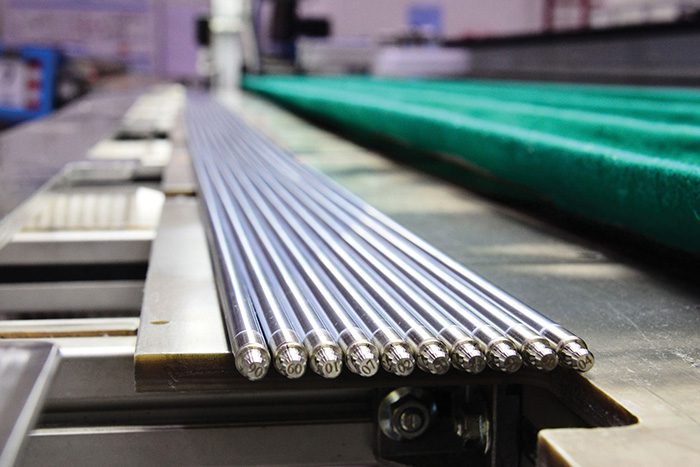 |
|
3. The test rods loaded in Rostov Unit 2 contain uranium dioxide fuel. Half of the rods are clad with zirconium alloy containing a chromium coating and the other half are clad with 42XHM, a chromium-nickel alloy. Courtesy: Rosatom |
Advanced reactor developers Moltex and Elysium recently said their technology will change how the industry deals with the recycling and reprocessing of spent nuclear fuel (SNF), part of the development of Generation IV reactors. The companies said their reactor designs, including molten salt reactors, can run on SNF, alleviating the issue of nuclear waste. Using molten salts in the reactor core instead of water allows for higher efficiency and greater safety, and also supports load following. It also allows the reactor to operate at higher temperatures.
Canada-based Moltex is developing an SSR-W reactor (Stable Salt Reactor–Wasteburner), a fast reactor that uses recycled nuclear waste as fuel. Moltex CEO Rory O’Sullivan told Reuters, “Typically, other attempts at recycling haven’t been economical, which is why they’ve not carried on, but we do seem to have big margins on our economic case. It seems to be really, very viable and makes a lot of economic sense.”
Then there’s a continued focus on fusion energy, long touted as the “holy grail” of electricity production. “I am used to hearing that fusion is always 50 years away,” Goodnight told POWER. “Times have changed and progress has been made, so I think we are now closing in on a 10- to 20-year horizon for commercial electricity production from fusion energy… I am encouraged by the combination of investment, focus, and recent technical developments that make it clear that fusion is going to be here sooner rather than later.”
—Darrell Proctor is a senior associate editor for POWER (@POWERmagazine).


